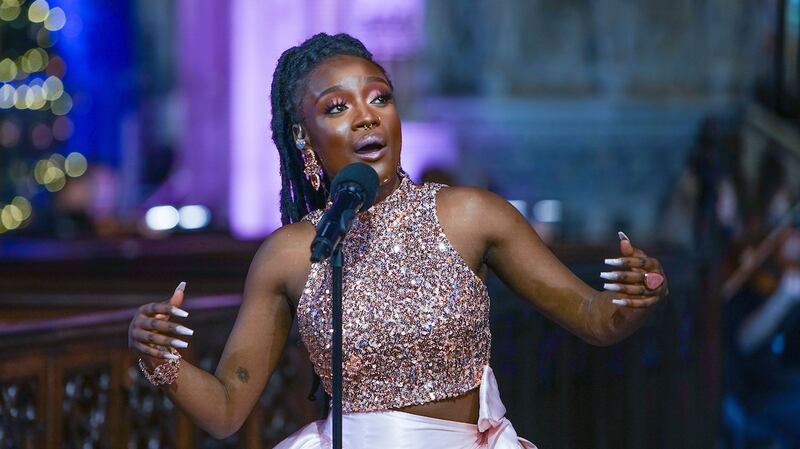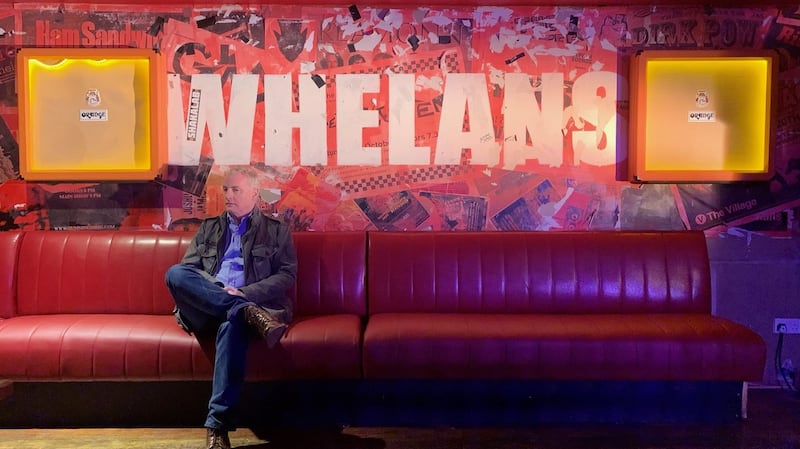There is a welcome Ronseal quality to Fanning at Whelan's. Dave Fanning walks along Dublin's semi-deserted Wexford Street telling viewers that for an hour a week for the next eight weeks, he'll be at music venue Whelan's with more than 30 Irish acts, and to get the ball rolling, here's Inhaler.
As they perform to a crowd-less room, the band's lead singer – who Google tells me is Bono's son – wears a T-shirt branded Top of the Pops.
I’ll inhale music shows during the best of times, but with the pleasure of gig-going either unavailable or compromised by residual Covid fear in 2021, the sight and sound of live performances on television has felt extra-visceral lately.

The year began with Tolü Makay and the RTÉ Concert Orchestra's cover of The Saw Doctors' N17, broadcast as part of RTÉ's NYE Countdown Show, going viral. Special moments kept coming: Damon Albarn playing melancholic piano at the centre of Glastonbury's stone circle, Celeste electrifying the Mercury Prize ceremony, jazz saxophonist Nubya Garcia decompressing her audience at the Proms. Take your pick.
At the Brit Awards, a stomping Dua Lipa forced me to revise my long disdain for medleys. On Later... with Jools Holland, reformatted for the pandemic as a more intimate affair, Self Esteem delivered song-of-the-year I Do This All the Time straight down the lens. Soon after, I bought a ticket for her Dublin tour date.
That cathartic, exuberant gig at Workman’s Club went ahead in November, but now Omicron has booted the live music sector back to a state of dismal, devastating limbo. The requirement to restrict capacity to 50 per cent makes many events too uneconomical to go ahead, even if they could figure out how to uninvite half their ticketholders. Some gigs are hastily relocating to a bigger venue, while others are being split into two – two performances to two audiences on the same day. None of this is easy and a lot of it is unviable.
The industry needs targeted financial support from the Government to make it through this step backwards.
A reprise of the recent scheme to fund the production of music broadcasting should be one of these supports. This won’t help venues, promoters and the majority of people whose livelihoods depend upon a functioning sector in the immediate term – other measures are urgently needed for that. But it will keep alive vital connections between artists and audiences, inspiring future gig-going.
Ringfenced funds
One of the few good things that happened last January, as Lockdown 3.0 got under way, was the advent of a €1.4 million Broadcasting Authority of Ireland fund to "address challenges being faced by the live music sector". Music programmes had previously been financed through the BAI's Sound & Vision scheme only on an ad-hoc basis. Here was supplementary, ringfenced money, provided by Minister for Tourism, Culture, Arts, Gaeltacht, Sport and Media Catherine Martin in an apt demonstration of the logic of having culture and media in the one department.
Fanning at Whelan's (Virgin Media Two on Saturdays at 10pm, repeated Virgin Media One on Thursdays at 11.30pm and on Virgin Media Player) was one of the eight recipients.

Although the no-nonsense series is sponsored by Guinness, with Diageo thanked in the end credits, BAI documents suggest the €285,000 awarded to Fanning's company Bebbak Limited – he's also the executive producer – to make it represents 64 per cent of the budget.
The BAI fund wasn't only about television. Irish Music Month, an innovative partnership between radio representative body Independent Broadcasters of Ireland and magazine Hot Press received almost €300,000 to stage a competition culminating in five station-nominated acts performing at the A New Local Hero showcase at The Academy in Dublin last month.
But music on TV could, without question, do with official encouragement. The genre hasn’t been the favourite child – or even a favoured child – of the people who run television channels since Paul McCartney turned 64. It’s seen as too niche, too expensive and too prone to ratings flops. Public-service broadcasters make an effort, but not a consistent one, and for their commercial cousins, forays into dedicated music programming are rare.
Even the BBC, which historically seized responsibility for bringing live music to the masses, is now only sporadically attentive, rarely letting anyone other than Holland have a go and preferring instead to squeeze live performances into the interludes of other entertainment shows. The axing of Top of the Pops in 2006 was blamed on ratings decline, as if this was independent of its increasingly bad slots.
The stranger argument is that music culture has grown too fragmented to represent – which is surely more a reason to try to do it – and that new artists can always use social media to reach fans. Well, yes, they can. But television still confers legitimacy and creates cultural memory. Would Makay’s N17 cover have been viewed so many times online if had not been pushed by RTÉ?
Resurrected footage
My film of the year, Summer of Soul… Or When the Revolution Could Not Be Televised (now on Disney Plus), resurrected glorious concert footage from the 1969 Harlem Cultural Festival. Filmed but, unlike Woodstock, never shown at the time, it offers an extreme example of the amnesia that can happen when links between media and live performance are broken.
More than 50 years later, television still has the power to expose an audience to sounds they didn’t know they liked until they heard them. Thankfully, music programming is let in from the cold at Christmas. Makay, her star in the ascent, is among the array of talent joining the RTÉ Concert Orchestra for Bowie – Starman, while she will also appear on Christmas in St Patrick’s.
Elsewhere, artists and presenters Loah and Una Healy (who sang a gorgeous John Prine cover with country singer Ray Lynam on the 2020 edition of Christmas at Home) are in the Mansion House's Round Room for a festive edition of their show The Heart of Saturday Night. Over on BBC Two, guests on Jools' Annual Hootenanny include Joy Crookes, Ed Sheeran and Yola.
There should, in other words, be something on some schedule somewhere to warm the cockles while we’re stuck inside waiting for this miserable pandemic to leave the stage.












